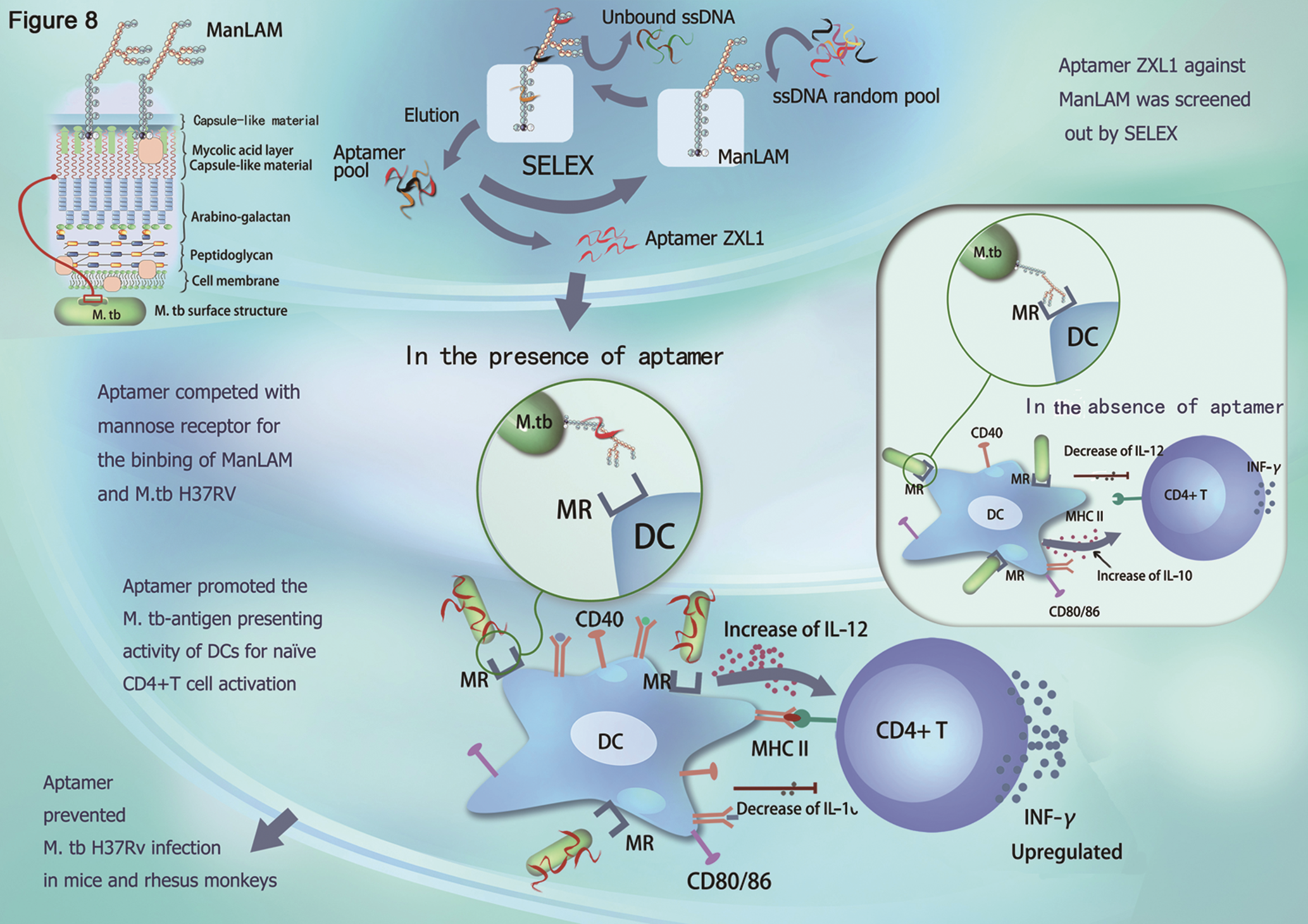Tuberculosis (TB) is a formidable public health challenge that contributes significantly to illness and death around the world, specifically with the increased presence of extensively drug-resistant TB (XDR-TB) and multidrug-resistant TB (MDR-TB), which are severe threat and cause one fourth of all human immunodeficiency virus (HIV)-related deaths in HIV-infected patients. The World Health Organization (WHO) estimated that there were about 9.0 million TB cases and 1.5 million TB-associated deaths globally in 2013. Bacillus Calmette-Guérin (BCG), the only available TB vaccine, decreases TB in childhood but gives little protection against tuberculosis in adult. Therefore, potent new anti-TB drugs without cross-resistance to known antimycobacterial agents are urgently needed. TB is caused by Mycobacterium tuberculosis (M. tb). Recently, Professor Xiao-Lian Zhang’s researcher group at the Wuhan University School of Basic Medical Sciences have firstly generated a single strand DNA (ssDNA) aptamer ZXL1 that serves as a therapeutic agent against virulent M. tb infection in mice and rhesus monkeys by using a method called Systematic Evolution of Ligands by EXponential enrichment (SELEX). Both macrophages and dendritic cells (DCs) are primary targets for M. tb infection. DCs are potent antigen-presenting cells that activate naïve T cells and determine the nature of the antimycobacterial response. Mannose-capped lipoarabinomanan (ManLAM) is a lipoglycan serving as a major cell wall component. Its primary function is to inactivate macrophages by inhibiting scavenge oxidative radicals and phagosome maturation in M. tb-infected macrophages. ManLAM also induces immunosuppression by inhibition of DC maturation and CD4+ T cells activation, as well as enhances interleukin (IL)-10 production (an important immunosuppresive cytokine) and depresses Th1 subtype cytokines secretion in these immune cells, such as IL-12 and IFN-γ. However, an orchestrated Th1-type cellular immune response involving CD4+ T and CD8+ T cells is required to effectively inhibit M. tb infection. In professor Zhang’s study, they found that ManLAM-specific aptamer ZXL1 has the high binding affinity towards ManLAM with equilibrium dissociation constant-Kd of 436.3±37.84 nM. Importantly, ZXL1 significantly inhibited the ManLAM -induced immunosuppression of CD11c+ dendritic cells (DCs) by competing with the mannose receptor for binding to ManLAM and M. tb H37Rv, and thus enhanced the M. tb-antigen-presenting activity of DCs for naïve CD4+ Th1 cell activation. More importantly, simultaneous injection of aptamer ZXL1 with BCG significantly reduced the progression of M. tb strain H37Rv infection and bacterial loads in lungs in mice and rhesus monkeys. Thus, these results suggest that aptamer ZXL1 is a new potential antimycobacterial agent and TB vaccine immune-adjuvant. This study was published online on 25 March 2014 in Molecular Therapy entitled “Aptamer Against Mannose-capped Lipoarabinomannan Inhibits Virulent Mycobacterium tuberculosis Infection in Mice and Rhesus Monkeys”. Xiao-Lian Zhang is the corresponding author. Qin Pan and Qilong Wang contribute equally to this work as first authors.

Putative model of aptamer ZXL1-mediated blocking of H37Rv mannose-capped lipoarabinomannan (ManLAM)-induced immunosuppression. DC, dendritic cell; IFN, interferon; IL, interleukin; MHC, major histocompatibility complex; MR, mannose receptor; M. tb, Mycobacterium tuberculosis; SELEX, systematic evolution of ligands by exponential enrichment; ssDNA, single-stranded DNA. Link to the article: http://www.nature.com/mt/journal/v22/n5/full/mt201431a.html CONTACT Xiao-Lian Zhang Department of Immunology, Wuhan University School of Basic Medical Sciences Wuhan 430071, China Tel: 86-27-68759986 Fax: 86-27-68759986 E-mail: zhangxiaolian@whu.edu.cn


